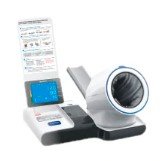Blood Collection from Lactating Mothers: Ensuring Optimal Sample Quality and Patient Comfort
Summary
- Proper identification of the lactating mother and verification of patient history is crucial before blood collection to ensure accurate results.
- Following strict aseptic techniques during blood collection can prevent contamination and ensure optimal sample quality.
- Offering patient education and emotional support during the procedure can help improve patient comfort and overall experience.
Blood Collection from Lactating Mothers in Postnatal Care Settings: Ensuring Optimal Sample Quality and Patient Comfort
As a medical laboratory professional or phlebotomist working in a postnatal care setting, it is imperative to follow specific protocols during blood collection from lactating mothers to ensure both optimal sample quality and patient comfort. This article will outline the key steps and guidelines that should be followed to achieve this goal.
1. Patient Identification and History Verification
Before proceeding with blood collection from a lactating mother, it is essential to properly identify the patient and verify their medical history. This step is crucial in ensuring that the correct patient is being tested and that the results are accurately attributed to the individual.
- Confirm the patient's identity by asking for their full name and date of birth.
- Check the patient's identification band or ask for additional identification if necessary.
- Verify the patient's medical history, including any medications they are currently taking or conditions they may have that could impact the blood Test Results.
2. Aseptic Techniques during Blood Collection
Following strict aseptic techniques during blood collection is essential to prevent contamination of the sample and ensure optimal sample quality. This is particularly important when collecting blood from lactating mothers, as any contamination could lead to inaccurate Test Results.
- Wash your hands thoroughly before starting the procedure and put on gloves to prevent the spread of infection.
- Clean the Venipuncture site with an alcohol swab and allow it to dry before proceeding with the blood draw.
- Use a new, sterile needle and collection tube for each patient to prevent Cross-Contamination.
3. Patient Education and Emotional Support
Providing patient education and emotional support during the blood collection process can help improve patient comfort and overall experience. This is especially important when working with lactating mothers, who may be going through a range of emotions in the postnatal period.
- Explain the blood collection procedure to the patient in simple terms and address any questions or concerns they may have.
- Offer emotional support and reassurance throughout the process, acknowledging the potential discomfort or anxiety the patient may be experiencing.
- Thank the patient for their cooperation and provide follow-up instructions if necessary.
By following these specific protocols during blood collection from lactating mothers in postnatal care settings, medical laboratory professionals and phlebotomists can ensure optimal sample quality and patient comfort. This not only improves the accuracy of Test Results but also enhances the overall experience for the patient, leading to better outcomes and increased satisfaction with the healthcare process.

Disclaimer: The content provided on this blog is for informational purposes only, reflecting the personal opinions and insights of the author(s) on the topics. The information provided should not be used for diagnosing or treating a health problem or disease, and those seeking personal medical advice should consult with a licensed physician. Always seek the advice of your doctor or other qualified health provider regarding a medical condition. Never disregard professional medical advice or delay in seeking it because of something you have read on this website. If you think you may have a medical emergency, call 911 or go to the nearest emergency room immediately. No physician-patient relationship is created by this web site or its use. No contributors to this web site make any representations, express or implied, with respect to the information provided herein or to its use. While we strive to share accurate and up-to-date information, we cannot guarantee the completeness, reliability, or accuracy of the content. The blog may also include links to external websites and resources for the convenience of our readers. Please note that linking to other sites does not imply endorsement of their content, practices, or services by us. Readers should use their discretion and judgment while exploring any external links and resources mentioned on this blog.
